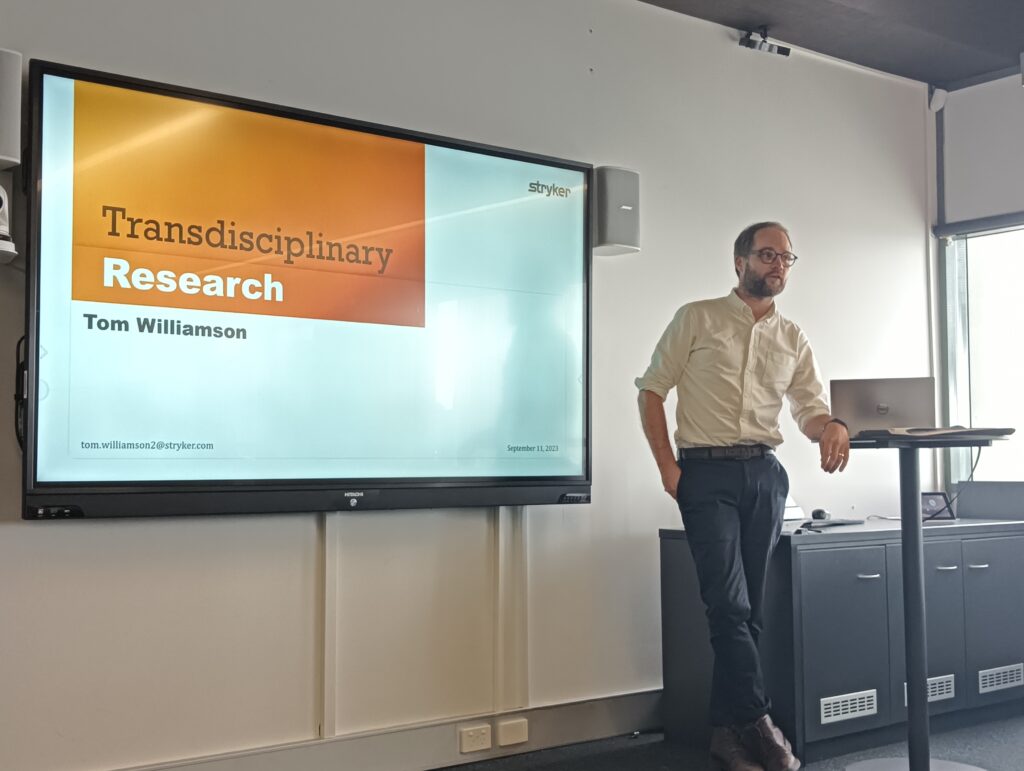QUT’s ITTCs Join Forces to Enhance Transdisciplinary Training – Connect and Share: Transdisciplinary insights for enhancing research

On Monday, September 11th, three of QUT’s Industrial Transformation Training Centres came together in true transdisciplinary fashion to deliver a collaborative initiative: ‘Connect and Share: Transdisciplinary insights for enhancing research.
This event, presented by the dynamic collaboration of the research centres at QUT – ARC BITA, Australian Cobotics Centre, Australian Cobotics Centre and the ARC Training Centre for Joint Biomechanics provided a platform for PhD students to share insight across-disciplinary research for furthering all fields of study.
ARC BITA is aimed at building transformative capability in people, data, and solutions to support Australian organisations to achieve higher returns on technology investment with a focus on behavioural economics, social marketing, and social psychology. Australian Cobotics Centre’s aim is to design and research Collaborative Robotics to Advanced Manufacturing for products including medical devices and steel making and disciplines including Engineering, Business, and Health.
The speakers gave insights into different approaches that they have found useful in their careers. Professor Glenda Caldwell, from the Australian Cobotics Centre, showed us how embracing one’s unique perspective can turn problems into opportunities for overcoming challenges. Dr Stephen Whyte, Chief Investigator at ARC BITA, delved into the art of asking the right (or wrong) questions in a transdisciplinary environment and unravelled the mysteries of cognitive behavioural bias. Dr Tom Williamson, Robotics Manager at Stryker R&D Lab and Industry Partner to all three centres, shared his insights on the vital collaboration required to transition from engineering projects to impactful solutions in healthcare.
For us at the ARC ITTC for Joint Biomechanics where we collaborate with orthopaedic surgeons and clinicians, we echo Dr Tom Williamson’s message that to go beyond assessing the technical feasibility of engineering solutions a transdisciplinary approach must be taken for real-world implementation. Most importantly, all stakeholders should be consulted in the initial stages of any project to ensure solutions meet technical, system, and end-user constraints.
Embracing transdisciplinary approaches is paramount to our mission of transforming the orthopaedic industry. By bridging the expertise of Biomechanical engineers and skilled surgeons we unlock a world of innovation and solutions that transcend traditional boundaries in the fields of pre-operative planning and post-operative patient care.

